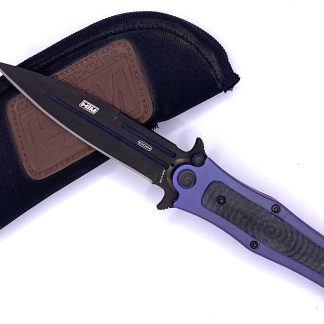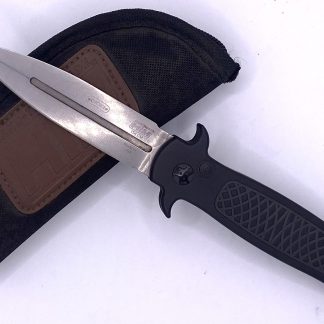CPM S90V is a high-end, premium stainless steel known for its exceptional edge retention and corrosion resistance. Developed by Crucible Industries, it is part of the family of super steels and is used in the production of high-performance knives.
CPM S90V is renowned for its exceptional edge retention. It can maintain a sharp edge for an extended period, making it well-suited for tasks that demand prolonged cutting without frequent resharpening.
The steel exhibits high wear resistance, making it well-suited for applications where the blade is subjected to abrasive materials or heavy use.
CPM S90V contains a significant amount of chromium, contributing to its excellent corrosion resistance. This makes it suitable for knives used in environments where exposure to moisture is a concern.
Like other premium steels, CPM S90V has a fine grain structure. This fine grain contributes to its sharpness, allowing for precise cutting performance.
CPM S90V has a high level of hardness, which contributes to its excellent wear resistance and edge retention.
One of the main challenges with CPM S90V is its difficulty to sharpen. The steel’s high hardness and wear resistance can make it more time-consuming and challenging for some users to bring the blade to a keen edge. Specialized sharpening tools or skills may be required.
While CPM S90V is known for its hardness, it can be relatively brittle compared to some other knife steels. This means that it may be more prone to chipping or breakage, especially under heavy lateral stress or when used improperly.
Knives made with CPM S90V are typically more expensive due to the cost of the steel itself and the challenges associated with working with such high-performance materials.
CPM S90V is not as commonly used as some other steels, so knives made with this steel may have limited availability in the market.
In summary, CPM S90V is a premium steel that excels in edge retention, wear resistance, and corrosion resistance. However, its difficulty in sharpening and potential brittleness are factors to consider, and it is often recommended for users who prioritize edge retention and are experienced in maintaining and sharpening high-performance steels.

